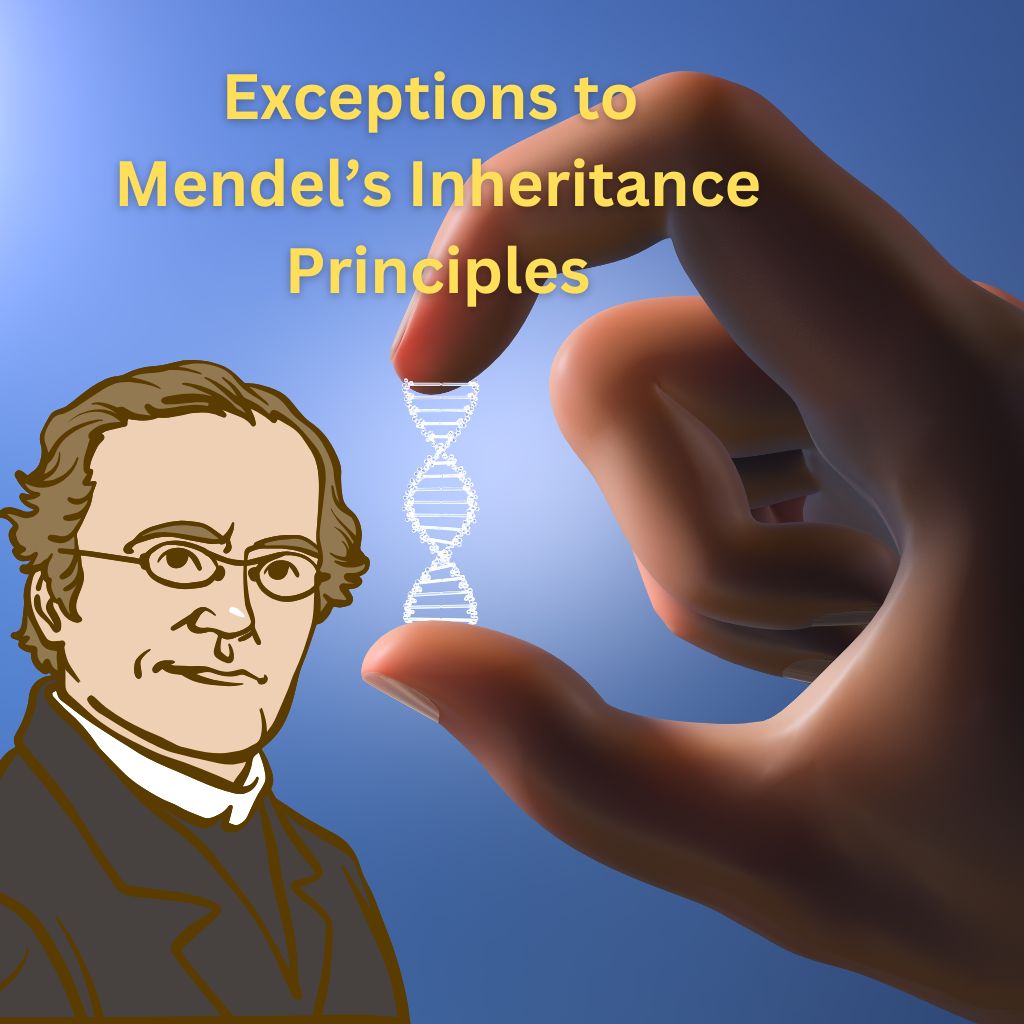What is Mendelian Inheritance Principle?
Mendel is known as the Father of Genetics. He worked on garden peas and gave Mendelian inheritance principles. According to the Mendelian inheritance Principle:
- Single gene controls a single character / one gene controls one character
- Inheritance is based on quality over quantity. Therefore, Mendelian inheritance is known as Qualitative Inheritance.
Qualitative Inheritance: It is the interaction between two genes (two alleles) of one locus
To understand qualitative inheritance, let’s take an example of a Monohybrid cross of a Tall (TT) and Dwarf (tt) parent.
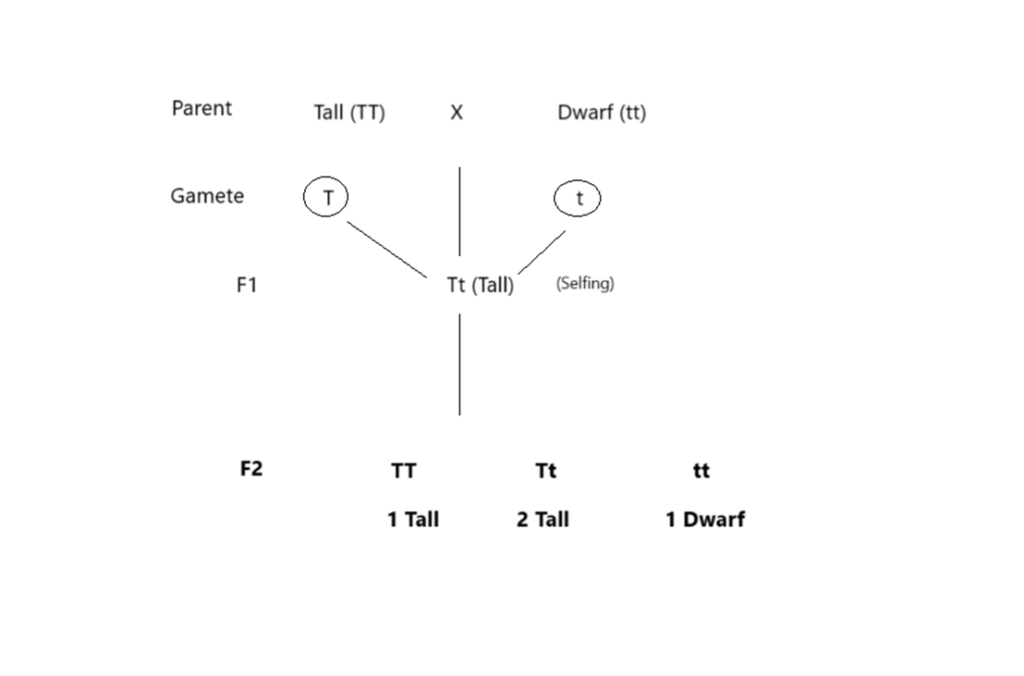
Let’s dive into the F2 generation of the Monohybrid cross. Notice something interesting about the tall plants? They come with two different genotypes: TT and Tt. But what does that mean, exactly? Let’s break it down together:
- Tall TT: These plants have two dominant alleles (T).
- Tall Tt: These plants have one dominant allele (T) and one recessive allele (t).
Now, here’s the big question:
If one plant has two dominant alleles and another has just one, why are both still tall?
The Answer Lies in the Power of Dominant Alleles!
Dominant alleles are like superstars—they take charge no matter how many are present! Even a single dominant allele (T) is enough to make the plant tall, just like having two dominant alleles (TT).
What does this teach us?
- The quantity of dominant alleles doesn’t matter for expressing the trait.
- The quality of the allele—being dominant—is what counts.
Those inheritances that do not follow Mendelian principles become the exceptions to Mendelian principles. Below are the examples of the exceptions to Mendelian principles:
Incomplete Dominance:
According to Mendelian principles, if a dominant allele is paired with a recessive allele, the dominant allele will express completely, and the recessive allele will not express at all. However, in case of incomplete dominance, the scenario is different.
Incomplete dominance was first observed in the flower color in Snapdragon/dog flower / Antirrhinum majus /4 o Clock (Mirabilis jalapa)
| Plant Character | Dominant Flower | Recessive Flower |
| Flower color | RED flower (R) | White flower (r) |
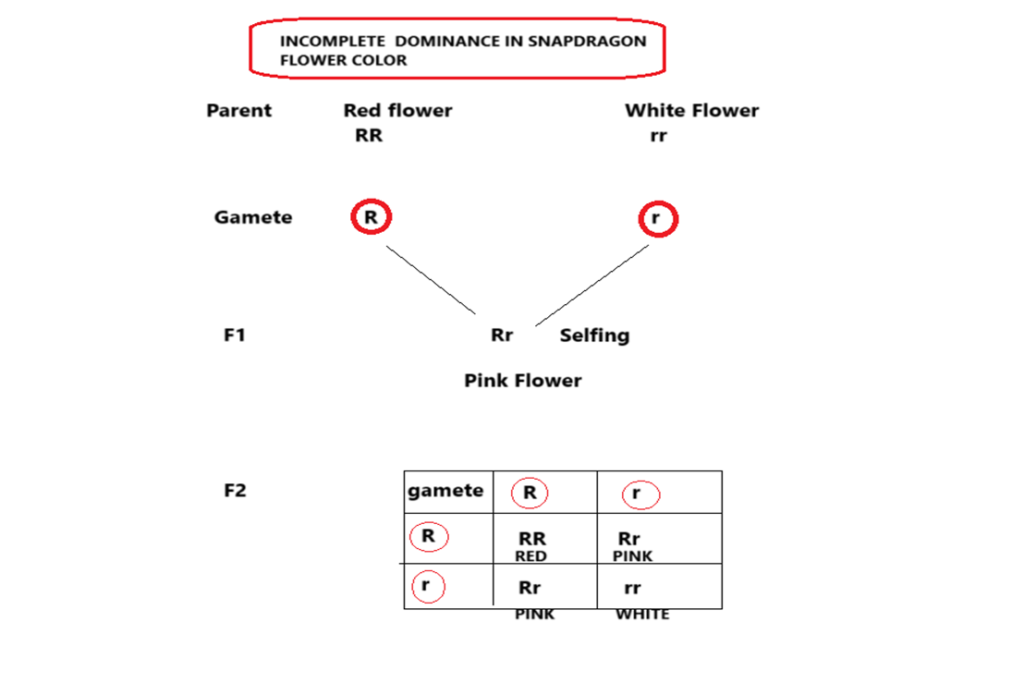
| F2 Phenotype | 3 [ Red, Pink, White] |
| F2 Genotype | 3 [ RR, Rr, rr] |
| F2 Phenotypic Ratio | 1 (RED): 2 (PINK) : 1 (WHITE) |
| F2 Genotypic Ratio | 1 (RR): 2 (Rr) : 1 (rr) |
Here in incomplete dominance, the F2 genotypic and phenotypic ratios are the same (1:2:1). If it was a Mendel’s monohybrid cross then the phenotypic ratio would be 3:1 and the genotypic ratio would be 1:2:1.
Reason for Incomplete Dominance
In the case of homozygous RR, there are two dominant alleles. Each allele expresses itself to form a particular enzyme that contributes to the flower color. Here, in the case of RR, each R expresses itself to form 50% of the total enzyme. In total, 100% of the enzyme would be responsible for giving the red color to the flower. In other words, to form 100% of the enzymes and to show the full RED flower color, which is a full trait, two dominant alleles are required. If any of the alleles are missing, the RED flower color will not be expressed.
In the case of the Rr genotype, only one dominant allele is present, meaning only R will express itself, i.e., 50% of the enzyme. To get the RED flower color, 100% of the enzymes are needed, and since only 50% of the enzyme is available, the intermediate flower color (PINK) is expressed.
Here, the traits shown, whether RED or PINK, are based on the quantity/number of dominant alleles. In other words, the traits here are not based on quality but rather on quantity. Therefore, it is an example of QUANTITATIVE INHERITANCE, since phenotypic expression is based on the quantity of dominant alleles.
Note: Incomplete dominance is an example of interaction between two genes of one locus (one gene locus Gene Interaction).
Why some alleles are dominant and others are recessive?
A normal gene forms proteins, and proteins act as enzymes. Enzymes are responsible for converting substrate into product. If the substrate is converted successfully into a product, then the trait is shown. The normal gene is otherwise called an unmodified gene.
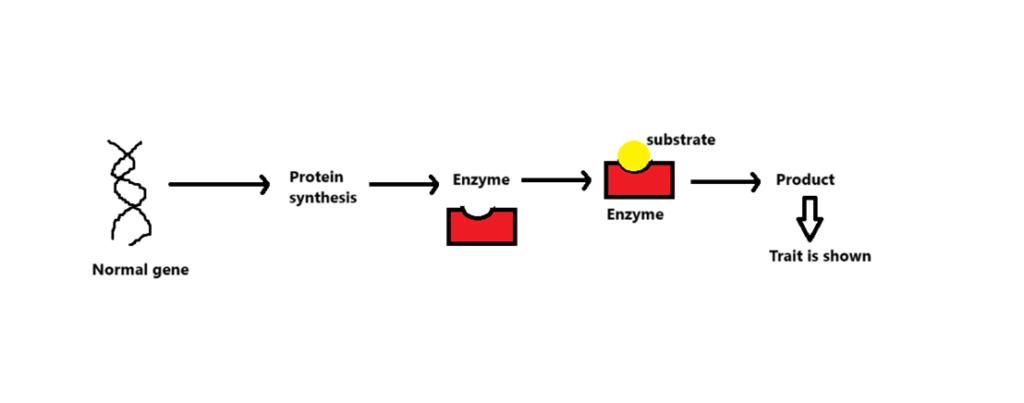
If the unmodified gene undergoes a mutation and is converted into a modified allele/gene, then it will have two fates. In the first condition, the modified allele might form a normal enzyme or a less efficient enzyme. In both cases, a product will be formed, and therefore, the phenotype will remain the same.
On the other hand, if the modified allele forms either a non-functional enzyme or no enzyme, no product will be formed. If the product is not formed, then the phenotype will change, and that is called recessive.
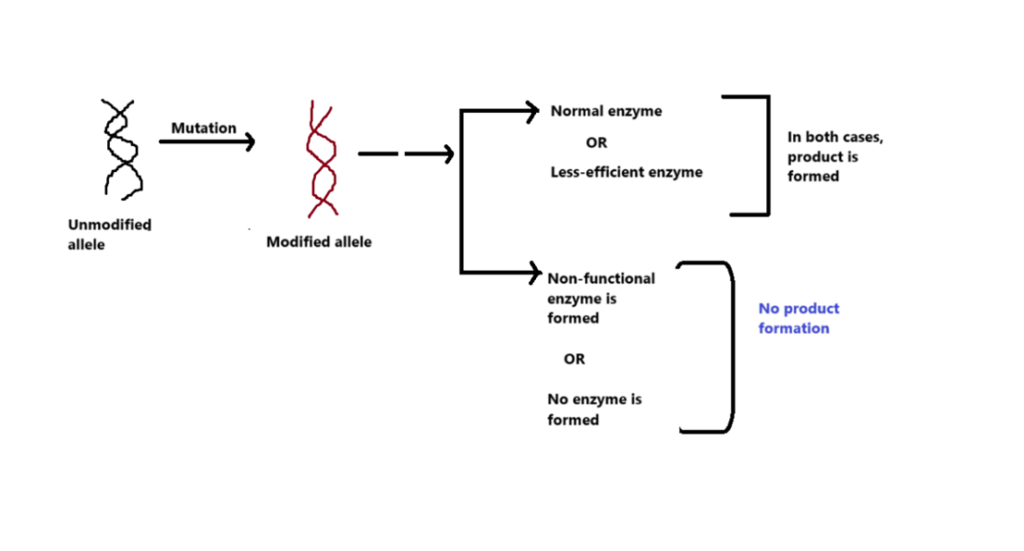
There are other examples of variations involving single genes. These include:
- Multiple alleles
- Codominance
- Pleiotropy
- Lethal alleles
- Sex linkage

